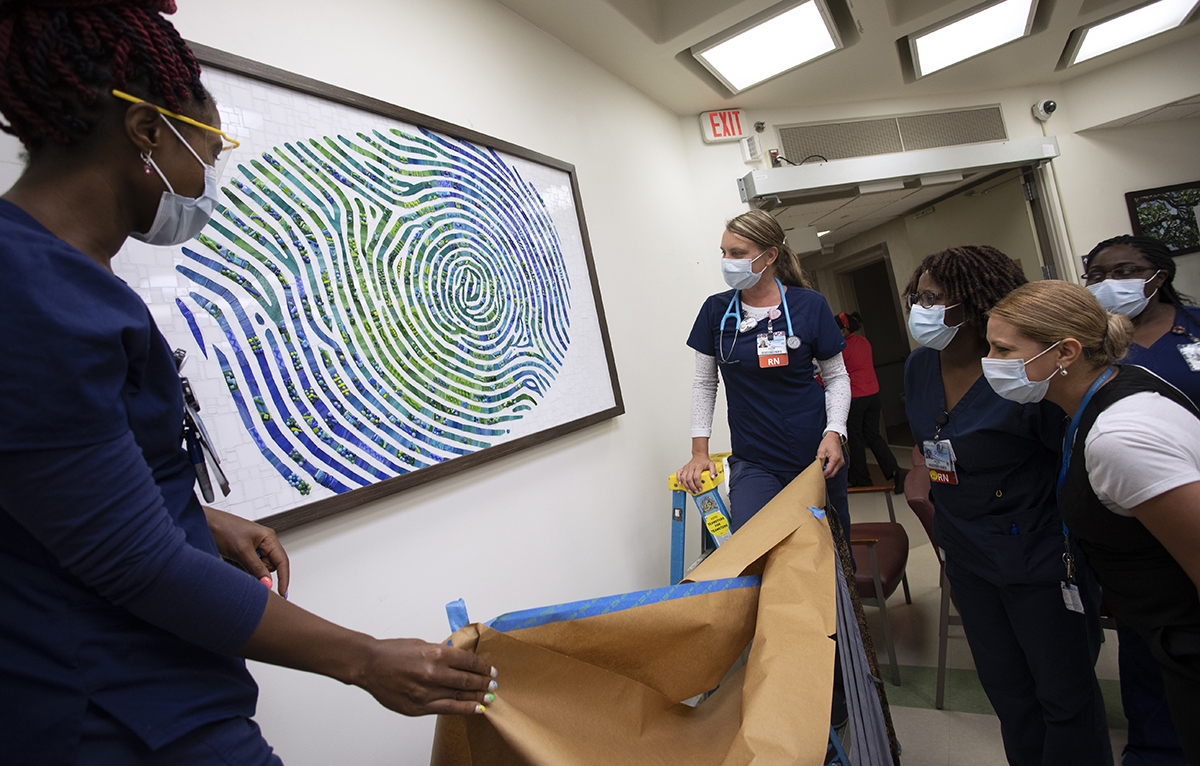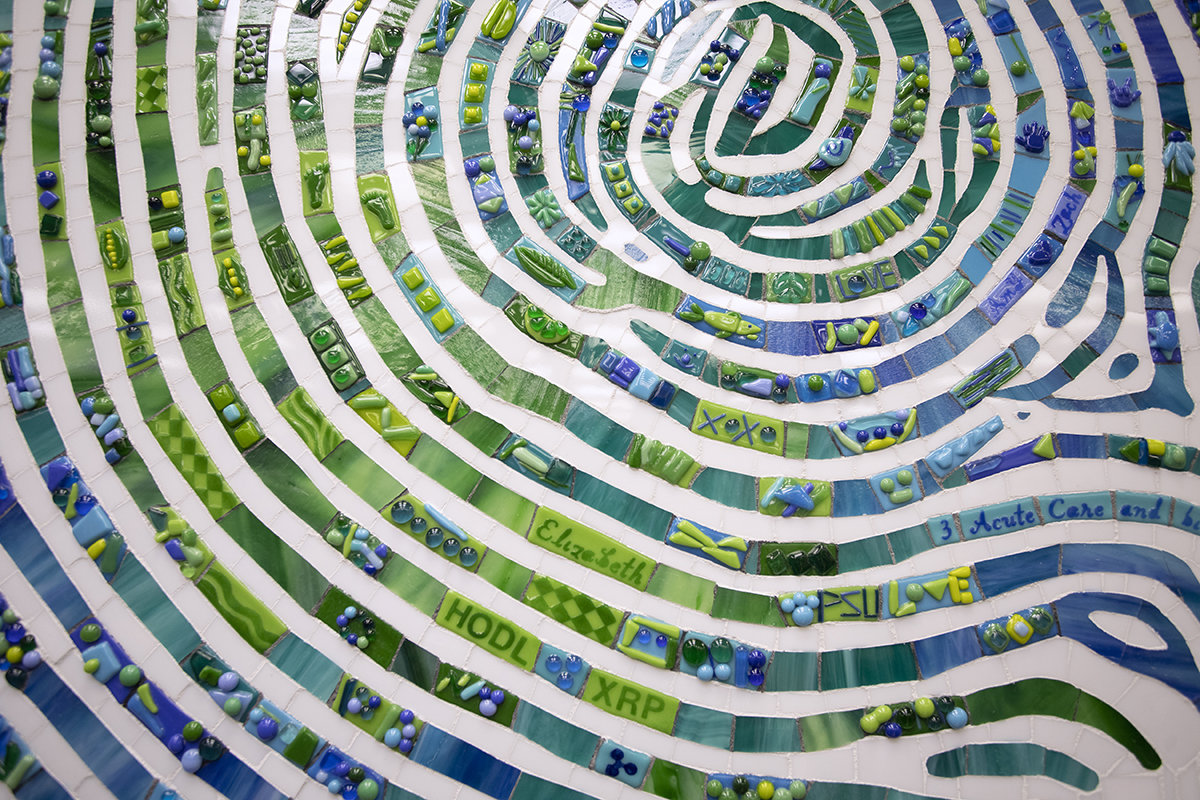Leaving their mark: COVID-19 staff collaborate on glass mosaic

Long after the COVID-19 unit is shuttered and the year 2020 is far behind, the hands of those who worked on the front lines to save lives and steer Penn State Health Milton S. Hershey Medical Center through an anxious stretch into the unknown will leave a beautiful reminder―a fingerprint mosaic made from 200 glass tiles.
The third floor Acute Care staff, otherwise known as the COVID unit, came together over the art project much as they came together throughout the pandemic―with a willing spirit, hardworking hands and the courage to try something new to make a difference.
“To me this project is meaningful because it demonstrates how we as a unit are made up of the unique individuals that together form a rich identity that can only benefit our patients and each other,” said Brian Cosner, nurse manager on the floor.
The idea for an art project to extend recognition to the acute care staff beyond the many verbal and tangible thank yous they received came from Center Stage Arts in Health, which provides arts programming to nourish well-being throughout the Milton S. Hershey Medical Center and Penn State College of Medicine community.
“We strove to find some way to symbolize how each staff member’s individual work contributed to a whole even more beautiful than the sum of its parts,” said Claire de Boer, founding director of Center Stage. “We also wanted to offer a project that would be a fun distraction for a few minutes from the demands of the clinical work.”
When she distributed a call for artists, Hummelstown artist Linda Billet proposed a glass tile mosaic of a fingerprint that eventually garnered the most votes when this unit’s staff weighed in.
“This past year of uncertainty surrounding COVID-19 presented our staff with numerous challenges, both professionally and personally,” said Emily Ingram, clinical practice nurse leader, 3 Acute Care. “There were often high levels of stress when learning to care for this new patient population while also trying to adapt to personal life changes related to the pandemic. This project came at a great time for our staff and really helped them to de-stress from the intenseness of the COVID-19 pandemic.”

The mosaic is made of 200 glass tiles.
De Boer and her staff set up a mini “makers space” on the unit, and Billet created a short video to guide staff through the process of choosing and fashioning glass pieces into a tile design―another way they would be leaving their fingerprints on this unique time in history.
“Linda brought in supplies for staff to take a few minutes to come and create a small tile during a break,” de Boer said. “We came in twice during night shifts to ensure that everyone had a chance to contribute.”
The project became a great conversation starter among all staff, Ingram said. “Eventually we saw that staff beyond 3 Acute Care began to participate in the project, which included doctors, therapists, dieticians, environmental health workers, and many more participants,” she said. “This really helped to unite all staff who cared for our patients during this challenging time and was truly a great team building experience.”
When the tiles were complete, Linda fired them in her kiln to fuse the glued glass chips to each tile before fashioning them into a 3-foot-by-five-foot mosaic.
“Each individual tile is recognizable by the individual who created it, and they all combine to make a large, beautiful fingerprint, showing the uniqueness and beauty of this unit’s work,” de Boer said. “This communal art project was a lovely example of how art can build community, provide positive distraction, and serve as a metaphor for life events that are difficult to express in words.”
Of course, the staff don’t need a piece of art to remind them of the unbearably long and uncertain days of heartbreak and weariness that marked the year 2020 and into 2021, but there’s something satisfying to coming together to make something beautiful from such a dark time.
“When the final project was unveiled, it was amazing to see the overwhelming response from staff, patients and visitors about how hundreds of individual tiles helped to create the large finger print,” Ingram said. “It is especially meaningful because it truly is a great representation of how important each person is to the overall care that is provided in the hospital.”
If you're having trouble accessing this content, or would like it in another format, please email Penn State Health Marketing & Communications.
